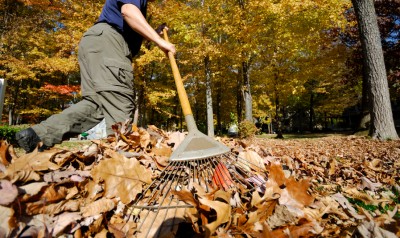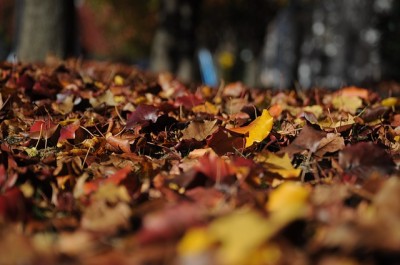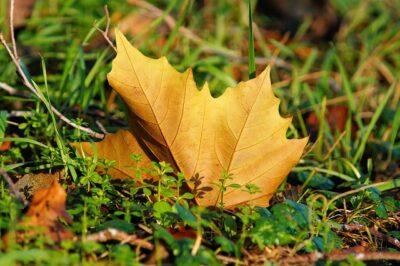The leaves are changing and the breeze is cooler. Many gardeners start to drift away from their gardens during fall, but this is the time where so much needs to be done. It’s not the moment to prepare the garden for a winter nap. Here are a few hints to help you on your way to preparing your garden for winter.
Get Rid of Weeds
Make your garden neat by clearing any blackened stems or foliage on, or left by, vegetables and other annual plants. This will prevent diseases and the survival of insect eggs over the winter. Cut any diseased foliage from plants and put directly in the trash. Clear out all old or diseased mulch.
Leaf mold is helpful in controlling weeds, but remove weeds already in the garden so you don’t create issues. Place a thick layer in the garden to block the sun from any seeds in the soil.
To further discourage weeds and insects, till the soil to expose any eggs or weeds before the ground gets too hard.
Mulch and Compost
It is a good idea to wait until the ground freezes before adding winter mulch. You can use pine needles, chopped leaves, peat or manure. Spread a thick layer of new mulch. This will help protect roots, plants and soil, and keep the temperatures of the soil even.
Don’t Plant Anything But Non-GMO Seeds. Get Them Here …
Compost any plant debris, and create organic mulch and soil booster. Active piles of compost will kill eggs and seeds where inactive piles do not.
One part of the garden can be left for the root or storage vegetables until the season is finished. Until then, you can always put straw over the plants. Cut all vines and till them into the ground. Prune all of your raspberries and cover your strawberry bushes.
Prevent Frozen Pipes
You can now slow down and stop watering. Put away the hoses and other watering systems. You can bring the hoses inside, or at least make sure water has been blown out. This may seem like an easy step, but often forgot. Also, cover your outdoor faucet for the winter. Many homesteaders fail to do this and regret it come spring when they discover their pipe is frozen.
Harvest to the End
Harvest fall crops right to the very end of the season. This late harvesting is for the root or “storage crops.” There are carrots, onions, winter squash and potatoes. Prepare them as you harvest so they keep for the winter.
You can build cold frames — if you wish to prolong the season just a little more. This is also the time to look over plants like sunflowers, broccoli and herbs.
You can also plant a cover crop to keep the topsoil from being either blown or washed away. In the spring, you can always till the crops into the ground in the spring. This is helpful in giving the soil extra nutrients.
Don’t Forget Your Bulbs
For any bulb plants, use mulch, including evergreen boughs, to cover the bulbs and beds and protect the soil. It will help with cracking when the ground freezes, and will protect plants if they are pushed to the surface.
Without A Doubt The Best Kept Secret In Indoor Self-Reliance Gardening…
If you find yourself wondering what to do first, here is a short checklist to help you out:
Checklist for Winter Preparation
- Finish harvesting. Usually when you know frost is coming, this marks the end of the season and you can do a last harvest from your plants. Plants such as tomatoes, cucumbers and peppers will not survive the frost.
- Prepare soil for any winter plants. Till the ground and prepare it for any winter plants, or cover crops you plan to put in.
- Clean up the garden. Now is the time to clip any vines, pull any plants, and do a general garden clean-up. Stake the plants you are keeping in for the winter so you will know where they are.
- Compost organic material. Put all clippings, trimmings, dead material into the compost pile. Do not put any diseased material into the pile, but directly into the trash. This is when you should put your manure, leaves, peat or other compost and mulch on your garden.
- Plant cover crops (optional). If you choose to plant cover crops, now is the time to put them in. Remember: Cover crops provide soil and weed protection as well as add nutrients to the soil when they are tilled into the dirt.
- Put away tools. This is when you put away all your gardening tools, including your hoses. Make sure your tool or gardening shed is clean and tools are in an organized and neat position. By doing this, you can get right to work in the spring.
- Store seeds. If you collected seeds from any of your crops, place them in appropriate containers and store for the winter. It will soon be time to start planting seeds.
- Note any changes for garden. If you want to rotate crops or get a different watering system, this is a good time to write it down so you will remember.
- Plan for next year. Decide which crops you wish to grow in the coming season, where to plant them and how many to plant. Look at the notes you recently made.
By doing these few things, no matter how big or small, you are guaranteeing the success of your vegetable garden next growing season.
What would you add to this checklist? Share your tips in the section below:
 Off The Grid News Better Ideas For Off The Grid Living
Off The Grid News Better Ideas For Off The Grid Living






